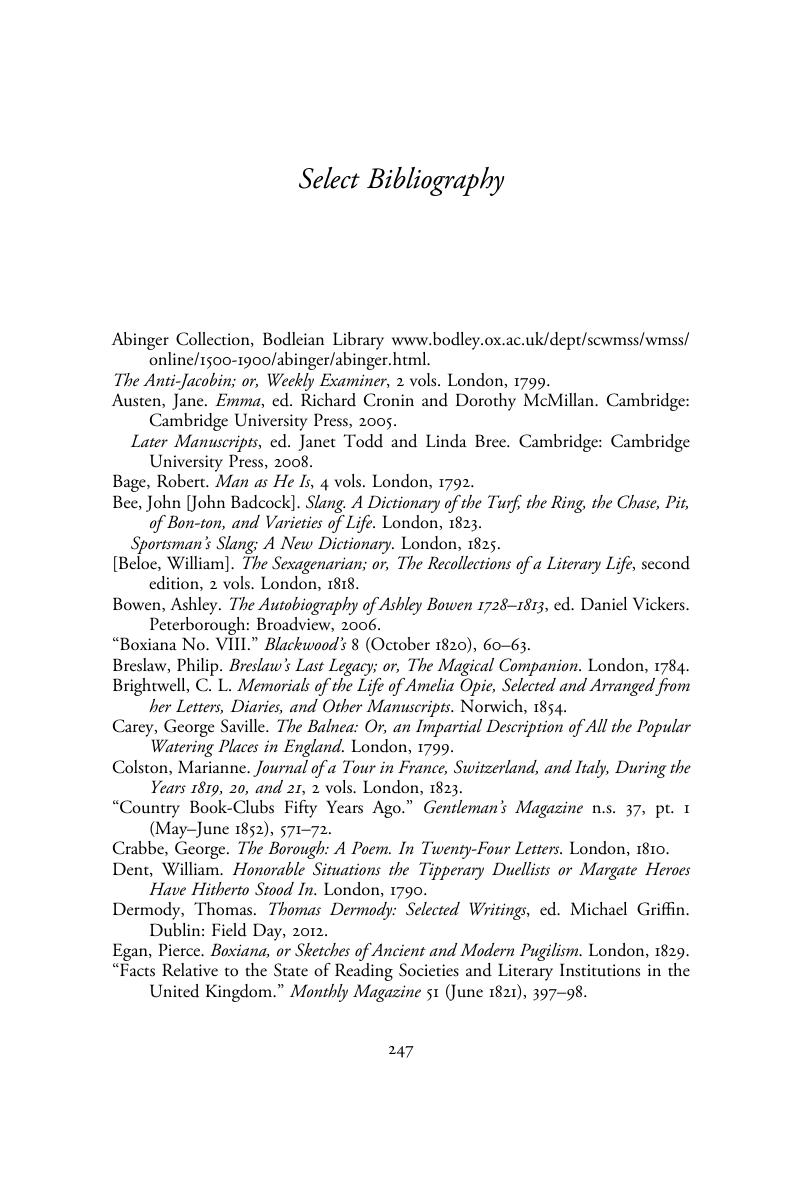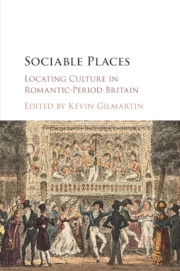Select Bibliography
Published online by Cambridge University Press: 04 July 2017
Summary

- Type
- Chapter
- Information
- Sociable PlacesLocating Culture in Romantic-Period Britain, pp. 247 - 258Publisher: Cambridge University PressPrint publication year: 2017



